Hi everyone , it’s been a while since I’ve shared this with you. Lately, I've been thinking about the future of restaking, as it's been a major topic that has dominated the market over the past 18 months.
To simplify the discussion, I may refer to EigenLayer or AVS in this article to describe the broad concept of restaking, but I use the term broadly to cover all restaking protocols and the services built on top of them, not just EigenLayer.
EigenLayer and the concept of re-staking have opened Pandora’s box.
Conceptually, extending the economic security of a highly liquid and globally accessible asset makes a lot of sense. This allows developers to build applications on-chain without having to build a whole new ecosystem for their project-specific tokens.
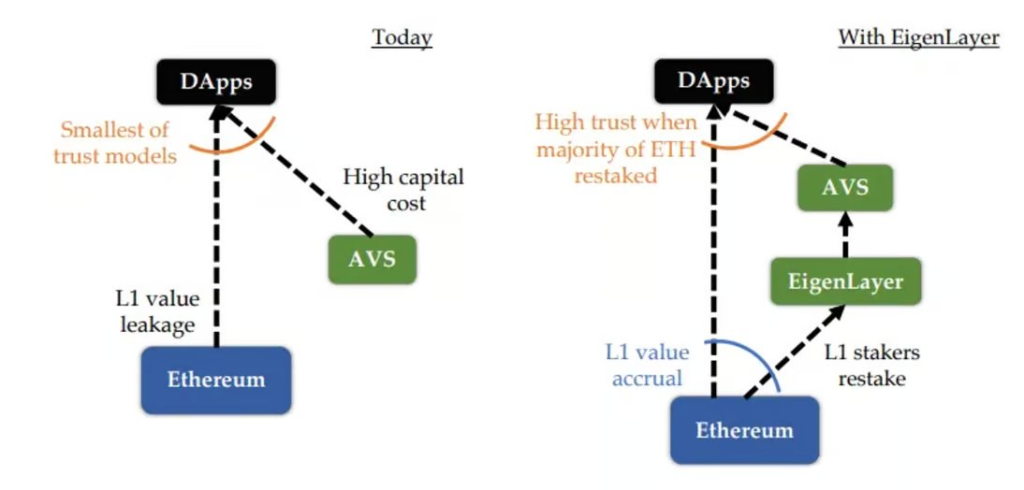
Ethereum (ETH) is considered a quality asset based on:
- It makes sense for developers to build products that take advantage of their economic security, as this not only enhances security and reduces costs, but also allows the product to focus on core functionality.
- Provides end users with a better product experience. However, after 18 months of development since the release of the EigenLayer white paper, the re-staking landscape has changed.
We now have Bitcoin re-hypothecation projects like Babylon, Solana re-hypothecation projects like Solayer, and multi-asset re-hypothecation projects like Karak and Symbiotic. Even EigenLayer has begun to support permissionless tokens, allowing any ERC-20 token to become a re-hypothecatable asset without permission.
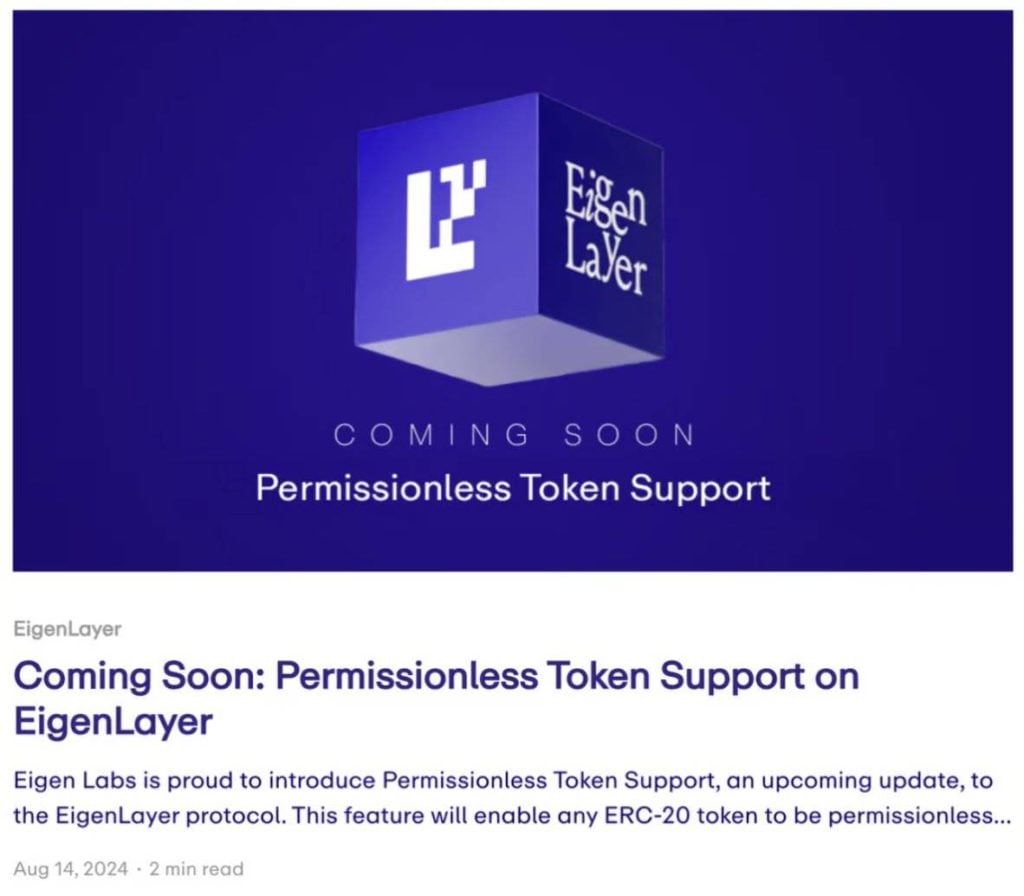
The market has shown that every Token will be re-pledged.
The core of re-pledge is no longer just about extending the economic security of ETH, but about issuing a new on-chain derivative - re-pledge Token (and the resulting liquid re-pledge Token).
In addition, with the rise of liquidity staking solutions such as Tally Protocol , it is foreseeable that the future of re-staking will cover all crypto tokens, not just L1 assets. We will see stARB being re-staked into rstARB and then further packaged into wrstARB.
So, what does this mean for the future of cryptocurrency? What happens when economic security can be extended from any Token?
Supply and demand dynamics of re-pledge
These are two key factors that determine the future of staking.
You could write a long post that dives into the complex issues surrounding subjective tokens and human coordination, but that's a bit beyond my capabilities. If a re-staking project is willing to give me some advisory tokens, I will consider writing about it, but I am a bit off topic.
In the world of cryptography, there have always been two immutable facts:
- People are always looking for higher returns
- Developers always want to create more Tokens
People seek higher returns
The re-pledge protocol has the best product market fit (PMF) on the supply side.
From its predecessors on Wall Street, we see that the cryptocurrency market is rapidly evolving into a market that is constantly seeking higher risks. Give an example? Polymarket already has a derivatives market dedicated to event news . We are all going to extremes.
Re-hypothecaters earn more through AVS (a service built on the re-hypothecation protocol). In an ideal world, developers would choose to build projects on top of restaking protocols and provide incentives to attract restakers to put their assets into these projects. To this end, developers may share part of the revenue or give their native tokens as rewards to re-stakeholders.
Let's do a simple calculation:
As of September 7, 2024,
- There is currently $10.5 billion worth of ETH being re-pledged on EigenLayer.
- Assuming that most of these re-staking ETH are Liquid Staking Tokens (LSTs), they are already generating 4% annual yield (APY) and hope to earn more by re-staking.
- To generate an additional 1% APY per year, EigenLayer and its AVS would need to create $105 million in value. This does not take into account curtailment and smart contract risks.
Obviously, if restaking only brings an additional 1% APY, the risk reward (r/r) is really not worth it. I would venture to say that it would take at least 8% or more for capital allocators to think the risk is worth it. This means that the re-hypothecation ecosystem needs to create at least $420 million in value every year.
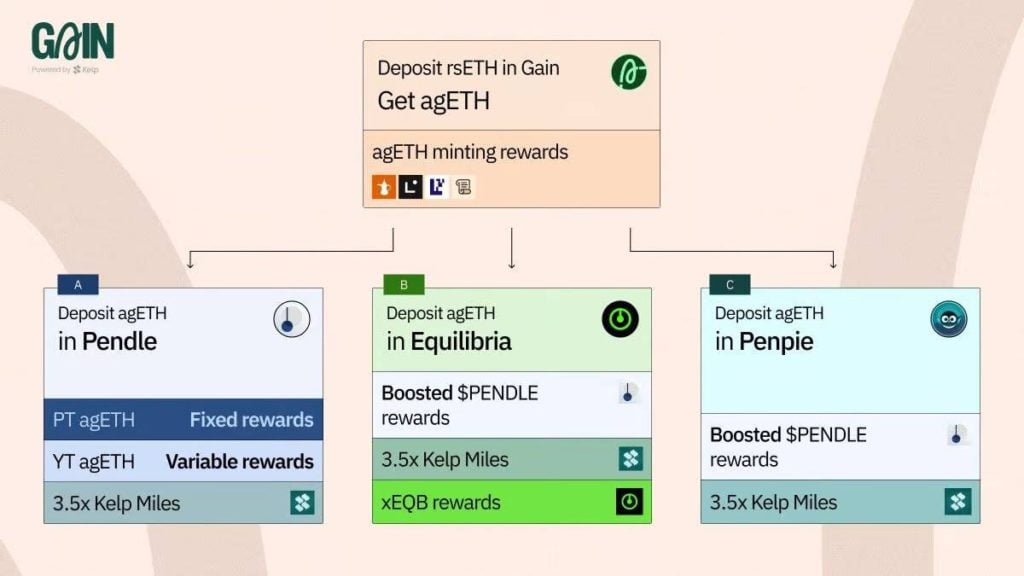
Currently, the high returns we are seeing from re-staking are primarily driven by the upcoming launch of the EIGEN Token and the Liquidity Re-staking Protocol’s points program – these returns pale in comparison to actual or expected revenue.
Imagine this scenario: there are 3 re-hypothecation protocols, 10 liquidity re-hypothecation protocols, and more than 50 AVS on the market. Liquidity will be fragmented, and developers (in this case, consumers) will be confused by the plethora of choices, rather than confident in the options available. Which re-pledge protocol should I choose? Which assets should I choose to enhance the financial security of my project? etc.
Therefore, we either need to significantly increase the amount of re-pledged ETH, or we need to accelerate the issuance of native tokens.
In short, the re-pledge protocol and its AVS need to keep the supply side active by issuing a large number of its tokens.
Developers want to create Token
On the demand side, the re-pledge protocol believes that it is more economical and safer for developers to use re-pledge assets to drive their applications than to use their own dedicated tokens.
While this may be true for some applications that require extremely high trust and security (such as bridging), in reality, issuing your own tokens and using them as an incentive mechanism is key to the success of any crypto project, regardless of chain. Or the app.
Using remortgaged assets as an additional feature of the product can bring additional benefits, but it should not affect the core value proposition of the product, nor should it be designed to weaken the value of its own token. Some, like Multicoin's Kyle, take an even tougher stance, arguing that economic security simply isn't a key factor in driving product growth.
Integrated Kyle e/acc: “Multicoin may be the largest holder in the world, and its token by market capitalization may qualify as an AVS.
Including Livepeer, Render, Helium, Hivemapper, Pyth, Wormhole, LayerZero.
There are some other Tokens that are not yet in circulation or have not yet been announced.
I've never had one of these founders, or any of our 200+ portfolio founders, call me and say, "Kyle, I think one of the major factors limiting our growth is the cryptoeconomic security that underpins our system. Liquidity quantity and quality.
Not once. "
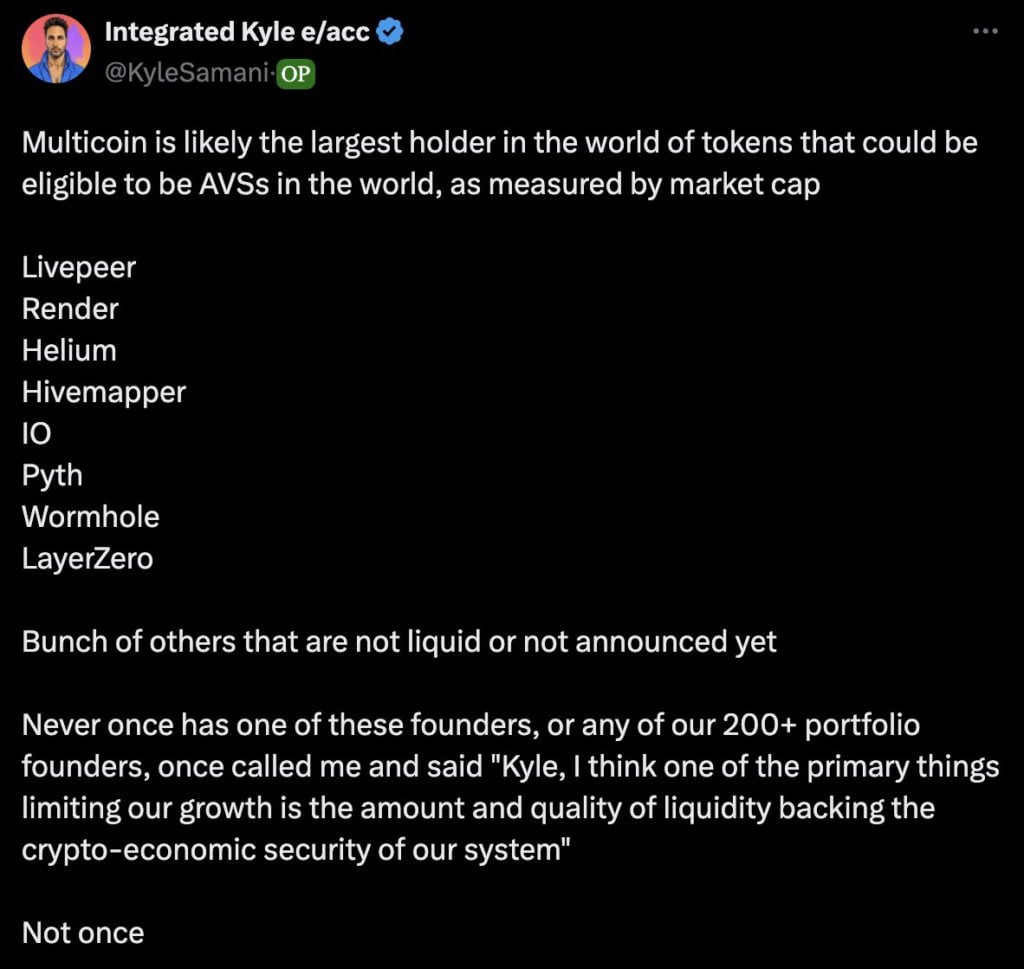
Frankly, it's hard to argue with his point.
I've been in crypto for 7 years and I've never heard another heavy crypto user or industry friend - someone who stores the majority of their net worth on-chain - tell me that they chose one product over another Because of its economic security.
From an economic perspective, Luca from M^0 wrote an excellent article explaining that due to market inefficiencies, it may be cheaper for a project to use its native token than to use ETH.
When will the token be issued? To be honest, regardless of whether these tokens are actually counted as securities, project-specific tokens with certain governance functions, utility, economics, or scarcity declarations have always been regarded by investors as a symbol of project success or popularity. This sentiment persists even without any remaining financial or control claims.
In a small industry like crypto, tokens are often more tied to narrative or expected liquidity changes than to cash flow. No matter how we look at it, it is clear and well-documented that in the crypto space, the stock proxy market is far from efficient, and higher-than-rational token prices translate into lower-than-rationally expected capital costs for the project. A lower cost of capital often manifests itself in the form of lower dilution in venture capital rounds, or higher valuations compared to other industries.
It can be said that due to market inefficiency at the capital market level, local Token actually provides developers with a lower capital cost than $ETH .
To be fair, EigenLayer seems to have anticipated this situation and designed the dual-staking system. Now, its competitors are even marketing support for multi-asset re-hypothecation as a marketing differentiation point.
If all Tokens will be re-staking in the future, what is the real value of the re-staking protocol to developers?
I think the answer lies in insurance and enhancement.
The future of multi-asset re-hypothecation will bring diversification of choices
If a project wishes to improve and differentiate its product, restaking becomes a complementary feature that can be integrated.
- Insurance: It provides additional assurance that the product being offered will work as advertised because there is more capital backing it.
- Enhancement: The best strategy for a restaking protocol is to reshape the entire narrative and convince developers to include elements of restaking technology out of the box in any product because it will make everything better. Oh, you're an oracle vulnerable to price manipulation attacks? What if we are also AVS?
Whether end users care about this remains to be seen.
All tokens will compete to be the preferred rehypothecation asset, as this gives them perceived value and reduces selling pressure. AVS can choose from multiple types of re-pledged assets based on their risk appetite, incentives, specific functionality, and the ecosystem they wish to align with. This is no longer just about core economic security, but about insurance, rehypothecation and politics. As each Token is staked, AVS will have many options.
- Which assets should I choose to ensure economic security, what political alignment do I want, and which ecosystem is best for my product?
Ultimately, the decision came down to what would provide the best functionality for my product. Just like applications are deployed on multiple chains and eventually become application chains, AVS will ultimately leverage the economic security of those assets and ecosystems that bring the greatest benefit, sometimes even multiple at the same time.
This tweet from Jai nicely sums up how most developers feel about the benefits of restaking.
It must be mentioned: we have seen some projects, such as Nuffle , trying to solve this situation.
Jai Bhavnani: "Jito announced support for restaking today. Now we have Eigen, Karak, Jito, Symbiotic, etc., and probably more. How long will it take before we have an aggregator that AVS can plug in for the most economical security ? And be able to proactively rebalance across all re-staking platforms based on cost.”
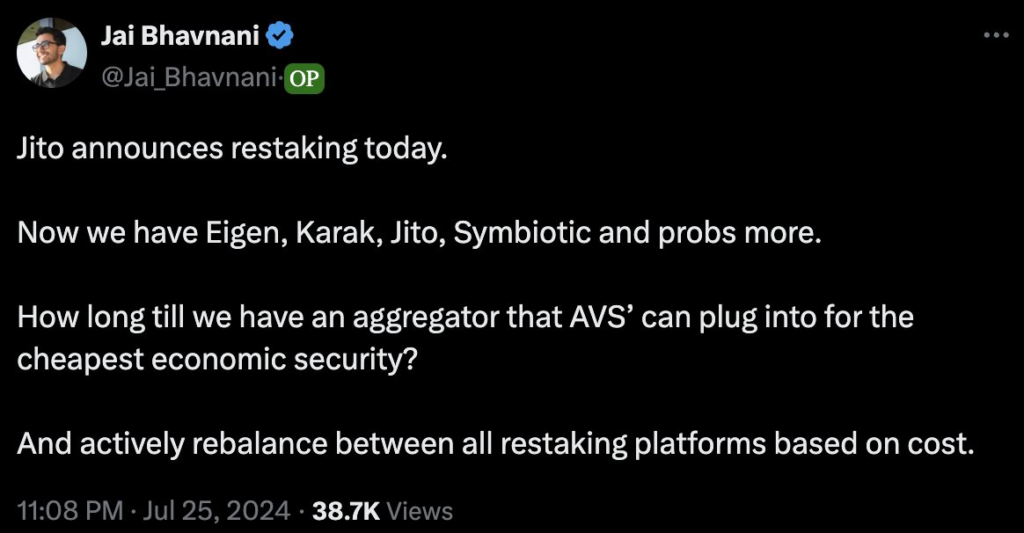
in conclusion
Crypto Twitter tends to think in absolute terms. In reality, restaking is an interesting fundamental tool that expands developer options and impacts on-chain markets by issuing a new type of derivative, but it is not a revolutionary change.
At the very least, it allows crypto asset holders with a higher risk appetite to earn additional income while expanding technology options and reducing engineering burden on developers. It provides a complementary functionality to developers and creates a new derivatives market for on-chain asset holders.
Many assets will be re-hyped, giving developers multiple options when integrating re-hypothecated assets. Ultimately, developers will choose the ecosystem that brings the greatest benefit to their product just as they would a new chain to deploy, and sometimes even choose multiple ones.
Tokens will compete to become rehypothecated assets because the new derivatives market brought about by rehypothecated assets will benefit these tokens, increasing their widespread use and perceived value.
It was never about economics, security, it was about insurance, rehypothecation and politics.








